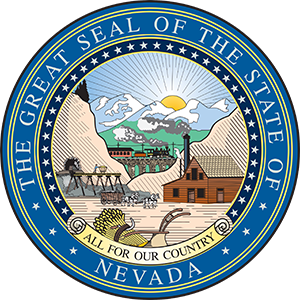Frequently Asked Questions
NRS 446.866 Exemption from certain requirements; certain local governing bodies prevented from prohibiting cottage food operations; registration; fee; inspection.
1. A cottage food operation which manufactures or prepares a food item by any manner or means whatsoever for sale, or which offers or displays a food item for sale, is not a “food establishment” pursuant to paragraph (h) of subsection 2 of NRS 446.020 if each such food item is:
(a) Sold on the private property of the natural person who manufactures or prepares the food item or at a location where the natural person who manufactures or prepares the food item sells the food item directly to a consumer, including, without limitation, a farmers’ market licensed pursuant to chapter 244 or 268 of NRS, flea market, swap meet, church bazaar, garage sale or craft fair, by means of an in-person transaction that does not involve selling the food item by telephone or via the Internet;
(b) Sold to a natural person for his or her consumption and not for resale;
(c) Affixed with a label which complies with the federal labeling requirements set forth in 21 U.S.C. § 343(w) and 9 C.F.R. Part 317 and 21 C.F.R. Part 101;
(d) Labeled with “MADE IN A COTTAGE FOOD OPERATION THAT IS NOT SUBJECT TO GOVERNMENT FOOD SAFETY INSPECTION” printed prominently on the label for the food item;
(e) Prepackaged in a manner that protects the food item from contamination during transport, display, sale, and acquisition by consumers; and
(f) Prepared and processed in the kitchen of the private home of the natural person who manufactures or prepares the food item or, if allowed by the health authority, in the kitchen of a fraternal or social clubhouse, a school or a religious, charitable, or other nonprofit organization.
(1) Nuts and nut mixes;
(2) Candies;
(3) Jams, jellies and preserves;
(4) Vinegar and flavored vinegar;
(5) Dry herbs and seasoning mixes;
(6) Dried fruits;
(7) Cereals, trail mixes and granola;
(8) Popcorn and popcorn balls; or
(9) Baked goods that:
(I) Are not potentially hazardous foods;
(II) Do not contain cream, uncooked egg, custard, meringue or cream cheese frosting or garnishes; and
(III) Do not require time or temperature controls for food safety.
- Carson City Health and Human Services, 775-887-2190 for Carson and Douglas www.gethealthycarsoncity.org
- Washoe County Health District, 775-328-2400 www.washoecounty.us/health
- Southern Nevada Health District, 702-759-0588 www.southernnevadahealthdistrict.org
Before selling foods, the cottage food operator must:
- Register the cottage food operation with the state health authority.
- Determine the type of durable packaging that will be used to protect the food items from contamination during transport, display, sale or purchase by consumers.
- Design labels for the food product.
• Major food allergens include milk, eggs, fish, crustacean or bivalve shellfish, tree nuts, wheat, peanuts and soybeans and any ingredient that contains protein derived from any one of these ingredients or additives• Allergen information must be included in one of two ways:o In parentheses following the name of the ingredient, for example: lecithin (soy), flour (wheat), and whey (milk); oro Immediately after or next to the list of ingredients in a "contains" statement. Example: Contains wheat, milk and soy
It means you must identify if any of your ingredients are made from one of the following food groups: milk, eggs, wheat, peanuts, soybeans, fish (including shellfish, crab, lobster or shrimp) and tree nuts (such as almonds, pecans or walnuts). So, if you have an ingredient made with a wheat-based product, you have two options:
1. Include the allergen in the ingredient list. For example, a white bread with the following ingredient listing: whole wheat flour, water, salt and yeast. In this example, the statement “whole wheat flour”, meets the requirements of federal law.
2. Include an allergen statement ("Contains:") after the ingredient list. For example a white bread, with the following ingredients: whole wheat flour, water, sodium caseinate, salt and yeast. Contains wheat and milk.
The "Contains" statement must reflect all the allergens found in the product. In this example, the sodium caseinate comes from milk.
For example, if you made Nut Bread, an acceptable ingredient list would be:
Ingredients: wheat flour, water, almonds, salt, yeast.
The following would not be acceptable:
Ingredients: flour, water, nuts, salt, yeast.
- Fresh or dried meat or meat products including jerky
- Fresh or dried poultry or poultry products
- Canned fruits, vegetables, vegetable butters, or salsas
- Fish or shellfish products
- Canned pickled products such as corn relish, pickles or sauerkraut
- Raw seed sprouts
- Tempered or molded chocolate or chocolate type products
- Cut fresh fruits or vegetables
- Food products made from cut fresh fruits or vegetables, not subject to cooking
- Food products made with cooked vegetable products
- Garlic in Oil mixtures
- juices made from fresh fruits or vegetables
- Ice or ice products
- Barbeque sauces, ketchup's and mustard
- Focaccia-style breads with vegetables or cheeses
- Roasted coffee products
